Biologists use the term ‘fungus’ to include eukaryotic, spore-bearing, achlorophyllous organisms that generally reproduce sexually and asexually. They are usually made up of filamentous, branched somatic structures which are typically surrounded by cell walls containing chitin or cellulose, or both of these substances.
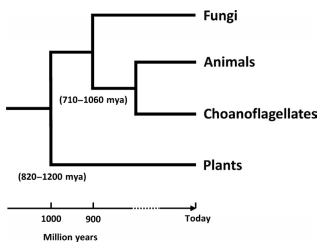
The fungi originated as a distinctive group of unicellular eukaryotes in the Precambrian period (4,600 mya – 541 (+/- 1) mya). Recent estimates of the origin of the fungal kingdom based on the analysis of molecular clocks range from 760 million years ago to 1.06 billion years ago. The reliability of date estimates based on molecular clocks is dependent upon calibration points derived from the fossil record, which is far from satisfying for the fungi. The oldest unambiguous fossils of fungi are described from the Lower Devonian Rhynie chert (400 million years old). These fossils show spectacular preservation and include chytrid sporangia and zoospores, zygomycete sporangia, and ascomycete fruit bodies.
The organisms termed informally as fungi (pl. fungi) are included in the formal and recognized kingdom of Fungi, in the classification provided by Whittaker (1969).
Fungal Classification & Its History
Fungal systematics and classifications are based on different studies including its genetics, sexual mechanisms, biochemistry, morphology (structures & ultra-structures), etc. Considering that, different schools of scientists classify organisms based on different characters and criteria, the fungal classification also poses the same debate and confusion. Besides, over time and with the advancement of knowledge in Mycology, especially due to the progress of molecular genetic techniques in the 1980s, some of the classification schemes considered important before have also become obsolete.
So, the taxonomy of fungi is in continuous flux, and opinions differ about the value of competing schemes of classification.
Until the 1980s, the taxonomy of fungi was based mainly on light microscopic examination of typical morphological features, giving rise to classification schemes that are now known to be unnatural. Examples of traditional taxonomic features include the presence or absence of septa in hyphae, fine details of the type, formation, and release mechanisms of spores (e.g. Kendrick, 1971), or aspects of the biology and ecology of fungi.
Useful ultrastructural details, provided by transmission electron microscopy, concern the appearance of mitochondria, properties of the septal pore, details of the cell wall during spore formation or germination, or the arrangement of secretory vesicles in the apex of growing hyphae.
Biochemical methods have also made valuable contributions, especially in characterizing higher taxonomic levels. Examples include the chemical composition of the cell wall (Table 1.1), alternative pathways of lysine biosynthesis (see p. 67), the occurrence of pigments (Gill & Steglich, 1987), and the types and amounts of sugars or polyols (Pfyffer et al., 1986; Rast & Pfyffer, 1989).
Good to know
Hypha (pl. hyphae; Gr. hyphe = web) is the unit of structure of most fungi. It is a tubular filament that elongates by apical growth.
Hyphae are generally quite uniform in different taxonomic groups of fungi. One of the few features of distinction that they do offer is the presence or absence of cross-walls or septa in the hypha dividing the whole structure into different compartments or cells.
……………………………………………
Here, in this article, the fungi are classified based on light microscopic observation of the septum in hyphae (presence or absence), its fine details (e.g. if dikaryotic phases are seen), formation & release mechanism of spores. Based on them, the two fungi are:
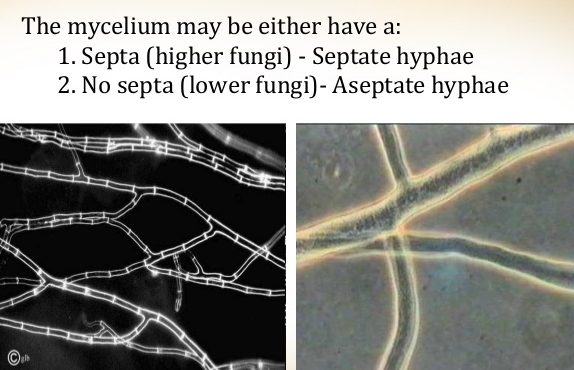
- Lower Fungi
- Higher Fungi
Lower Fungi
The lower fungi comprise the simplest and the primitive group of fungi which lack septum in the hyphae and primarily reproduce by sporangiospores. It is an informal group that lack any taxonomic position.

History: Early philosophers classified matter into three Kingdoms: Animal, Vegetable, and Mineral. Fungi were placed in the Vegetable Kingdom because of certain similarities to plants such as their lack of mobility, absorptive nutrition, and reproduction by spores. Indeed, it was at one time thought that fungi had evolved from algae by loss of photosynthetic pigmentation.
This was indicated by the use of such taxonomic groups as Phycomycetes, literally meaning ‘algal fungi’. This grouping, approximately synonymous with the loose term ‘lower fungi’, is no longer used because it includes taxa not now thought to be related to each other (chiefly Oomycota, Chytridiomycota, Zygomycota).
Early systems of classification were based on morphological (macroscopic) similarity, but the invention of the light microscope revealed that structures such as fruit bodies that looked alike could be anatomically distinct and reproduce in fundamentally different ways, leading them to be classified apart.
Habitat & Characteristics: The majority of these are aquatic (e.g. Saprolegnia), some are amphibious (e.g. Phytophthora), and some terrestrial (e.g. Rhizopus).
- The somatic phase consists of either a unicellular thallus or a non-septate coenocytic mycelium. The septa usually remain suppressed in the actively growing stage.
- Asexual reproduction takes place by sporangiospores and sometimes by conidia. The sporangiospores are motile (zoospores) in aquatic species and non-motile in terrestrial species.
- The spore-producing units are usually not grouped into a complex fructification.
- Sexual reproduction, when present, is either isogamous or heterogamous.
- Karyogamy generally follows plasmogamy almost immediately so that there is no dikaryophase in the life cycle.
Four of the classes of fungi are included in the lower fungi group. They are:
- Chytridiomycetes: They have zoospores (motile cells) with a single, posterior, whiplash structure (flagellum). e.g. Synchytrium endobioticum, a pathogen of potato.
- Oomycetes(water molds): They produce zoospores typically containing two flagella in sporangia. The anterior flagellum of a zoospore is a tinsel type, while the posterior flagellum is a whiplash type. e.g. Saprolegnia parasitica, Phytophthora infestans, etc.
- Myxomycetes (slime molds): They are microscopic, phagotrophic, non-pathogenic bacterivores, considered a special group of fungi. They help to decompose plant remains. Their life cycle has amoeboid, motile, and trophic stages, either unicellular or multinucleate, and a reproductive stage with spores generated by a complex non-motile fruiting body.
- Zygomycetes: The class zygomycetes are named after the thick-walled resting spores which are called zygospores and these are formed as a consequence of the complete fusion of the protoplasts of two equal or unequal gametangia. However, because not all species placed in this class have been shown to produce zygospores, a variety of morphological, biological, and ecological characteristics also enter into defining the class. e.g. Rhizopus stolonifers.
Good to know
- It is now evident through evolutionary research that class Oomycetes is unrelated to the true fungi. Indeed, fungi appear more closely related to animals than to oomycetes, and oomycetes are more closely related to algae and green plants than to fungi and animals.
-
The Myxomycetes are a group of ameboid protists of the kingdom Protista, considered for many years as a special group of fungi.
Higher Fungi
The fungi group with hyphae well-developed, septate, and usually at some stages of development interwoven into a compact tissue especially in the fruiting body (as in ascomycetes, basidiomycetes, and imperfect fungi) is called higher fungi.

Some of the characteristics of higher fungi are:
- No motile cells are produced at any stage of their life.
- They have a dikaryotic stage (cell with two types of nuclei) in their life cycle.
The higher fungi comprise the following three classes:
- Ascomycetes: The primitive morphological character that distinguishes members of Ascomycetes from all other fungi is the Ascus, a saclike cell containing the ascospores cleaved from within by free-cell formation after karyogamy and meiosis. Eight ascospores typically are formed within the ascus, but this number may vary from one to over a thousand according to the species. e.g. Claviceps purpurea.
- Basidiomycetes: Basidiomycetes are characterized primarily by producing their sexual spores, termed basidiospores (typically 4 in number), on the outside of a specialized, microscopic, spore-producing structure called the basidium. e.g. Polyporus sp., Ganoderma sp.
- Deuteromycetes: They are often referred to as “fungi imperfecti” that is ”imperfect fungi” a term accepted by many mycologists, because their only known reproductive mechanism is asexual. They are “second-class” fungi that have no known sexual state in their life cycle, but a parasexual cycle or parasexuality generally operates in their life to fulfill the requirements of sexuality and thus reproduce only by means of conidia. e.g. Aspergillus conidia.
Why do we need to know this classification?
Pioneers of mycology sought to organize fungi into groups with shared characteristics and this morphological approach was successful in carving out the ascomycetes and the basidiomycetes and identifying sub-groups of closely related genera. In some cases, these pre-Darwinian schemes reflected evolutionary relatedness because some broad structural similarities among the fungi do reflect kinship.
In many instances, however, these early investigations lumped unrelated organisms into groups defined by shared characteristics – such as spore color – that held no evolutionary significance. Progress toward a natural classification of fungi came with advances in microscopy and biochemistry in the twentieth century, but the advent of the polymerase chain reaction and other molecular genetic techniques in the 1980s transformed the study of fungal taxonomy. Since then, many of the traditional groups have been reorganized and renamed and the assignment of thousands of species remains in flux.
But, still today microscopic features are important for recognizing fungi and making an initial identification which can then, if necessary, be backed up by molecular methods. Indeed, the comparison of DNA sequences obtained from fungi is meaningful only if these fungi have previously been characterized and named by conventional methods. It is therefore just as necessary today as it ever was to teach mycology students the art of examining and identifying fungi.
References & Other Links
- Introduction to Fungi, Third Edition by John Webster & Roland W.S. Weber.
- Introductory mycology by C. J. Alexopoulos, C.W. Mims & M. Blackwell.
- The Fungi, Third Edition by Boddy, Lynne, Money, Nicholas P., Watkinson, Sarah C.
- Introduction to Oomycetes from American Phytopathological Society.
Revised by
- Abulais Shomrat on 16 July, 2021.
 Plantlet The Blogging Platform of Department of Botany, University of Dhaka
Plantlet The Blogging Platform of Department of Botany, University of Dhaka
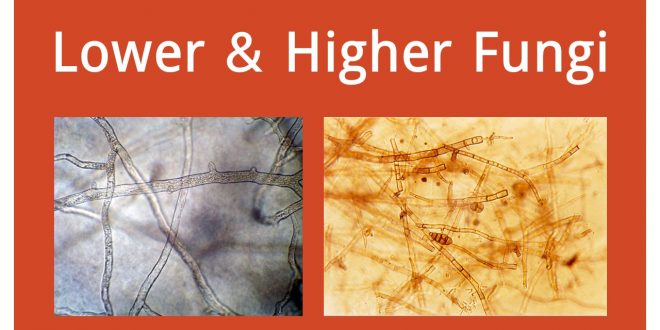


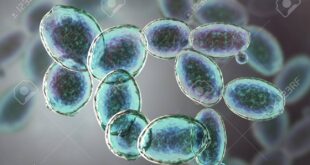
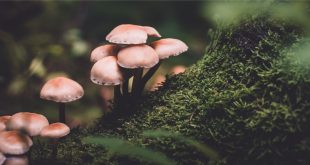
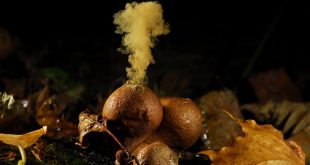
All fungi related articles are impressive. thanks for this one also